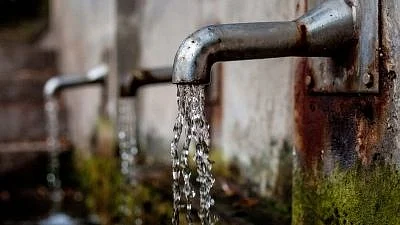There is little doubt that India’s water shortage problem is real and happening! Numbers confirm the alarming reality. According to the Ministry of Jal Shakti, India’s annual average per capita water availability was assessed at 1816 cubic metres and 1545 cubic metres in 2001 and 2011, respectively.
This could further reduce to 1367 cubic metres in 2031. In 2019, NITI Aayog reported that nearly 600 million Indians are water-deprived and about 40% of the population will not have access to drinking water by 2030.
Furthermore, unprecedented incidents of floods and cyclones across India in recent months are a reminder of our vulnerability to climate change. Flooding has been a recurring phenomenon resulting in damage to property and infrastructure besides loss of lives and livelihoods.
The Ministry of Home Affairs in response to a Lok Sabha question has stated that over 40 million hectares of the total geographical area is at risk of flooding in the country.
Extreme rainfall events have also increased over the years, and a wetter future is projected across India because of climate change.
It is, therefore, time to reconcile our efforts toward strengthening India’s water infrastructure. Adopting digital technologies can improve efficiencies and help make informed decisions for a more resilient future. A digital twin is a great way to make water management processes smarter.
What Is a Digital Twin?
A virtual model of a real-world scenario, a digital twin is a data-based, model-oriented digital representation of physical assets or systems that have been created by humans or via natural means.
Real-time data is collected through the Internet of Things sensors to build models that can detect anomalies, predict outcomes, and simulate the future using artificial intelligence and machine learning.
In the case of water basins, digital twins could be deployed to predict and forecast the location and frequency of floods, thereby acting as an early warning system and ensuring reduced flood damage. In other words, digital twins can facilitate preparedness against imminent disasters through efficient water management.
Application of Digital Twins: India Vis-à-Vis the Globe
The use of digital twin technology is steadily gathering momentum in India. It is deployed in domains such as inventory management, supply-chain optimisation, manufacturing, and smart cities.
Of late, India has also started deploying Building Information Modeling technology in the building and construction sector and urban flood management. However, the use of digital twins in water resource management is at a nascent stage.
In contrast, many Asian and western countries are already using digital twins in their regular water management practices.
In South Korea, digital twin technology is used for the water management of five major rivers.
The topographic data collected are fed into virtual simulations to generate information on each river’s topography, changing water levels, surrounding management facilities, downstream obstructions, flood levels, and flash floods.
Similarly, urban water utilities in the United Kingdom are leveraging digital twins to optimise their operational efficiency.
Europe, especially Germany, is using digital twin technology coupled with hydroinformatics to improve the visibility, performance, and compliance of water networks.
What Is the Way Forward for India?
We have a long way to go to witness the application of digital twins in the water space. Development and deployment are challenged by poor data quality, the need to keep the simulation model up to date and operational in real time, and lack of investments.
Further, a one-size-fits-all approach may not work in the case of water basins as their spread and uses are heterogeneous.
In many cases, infrastructure needs to be equipped with sensors to capture real-time data, and processes have to be digitally transformed as a prerequisite.
All these not only require a digital transformation but also a change in the mindset and approach to water management.
The good news is that India is taking various steps to address its water crises. The 7th edition of India Water Week concluded in November 2022 with the aim to promote awareness on conservation and the effective use of water resources.
Some of the recent policy initiatives include Jal Jeevan Mission (2019), Jal Shakti Abhiyan (2019), AMRUT 2.0 (2021), Amrit Sarovar Mission (2022), steps to revise the 2012 National Water Policy (2021), and the announcement of five river-linking projects in the Union Budget 2021-22. Could digital twins be implemented in these projects for alleviating water scarcity?
Imagine deploying digital twins for linked river basins to help measure, model, and predict the course of river flows. Interspersing weather prediction models with a digital replica of river basins can potentially allow risk-free in silico testing (computer-based simulation) of water distribution patterns.
The application of digital twins not only helps anticipate the problem but also infuses agility in response, helping optimise the system through increased efficiency over the medium to long term.
The future of digital twins is promising! It will be interesting to watch how digital twins could be interwoven with the national agenda of making rural and urban India self-reliant and water secure in the future.
(Anjali Taneja is the Senior Policy Specialist of Strategic Studies, Rajesh Shenoy is the Sector Head of AI & Digital Platforms, Arup Nandi is the Chief of Research at the Center for Study of Science, Technology and Policy.)
(This is an opinion piece and the views expressed above are the author’s own. The Quint neither endorses nor is responsible for the same.)
